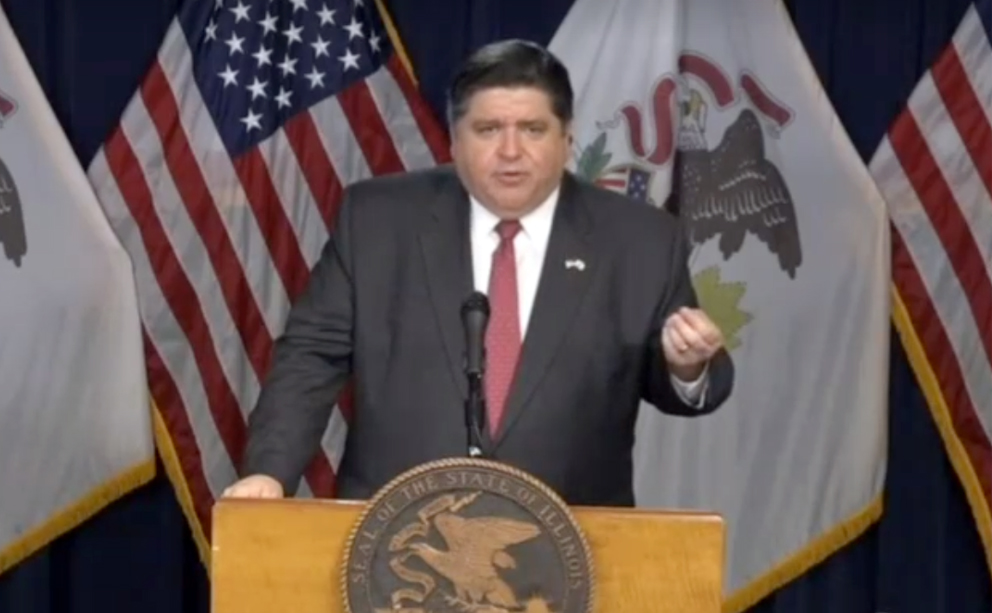The number of hospitalized COVID-19 patients has grown in the past week, but state officials noted Monday that intensive care unit bed capacity has not changed and ventilator availability increased over the same period.
As of Monday, 4,599 COVID-19 patients and suspected COVID-19 patients were hospitalized, a 7 percent increase from last week. Of that number, 1,239 were in an intensive care unit and 757 patients were using a ventilator.
About 40 percent of the state’s 3,134 ICU beds were in use by COVID-19 patients and suspected COVID-19 patients, which Gov. JB Pritzker said is roughly the same percentage as last week.
The percentage of available ventilators has grown since last week. The Illinois Department of Public Health reported about 59 percent of the state’s 3,256 ventilators were available as of Monday, compared to 55 percent a week ago.
Thirty-seven percent of the state’s 30,830 hospital beds remain available.
Pritzker said the numbers show that efforts to mitigate the spread of the virus have worked. Before the stay-at-home order and other steps were taken, he said projections in mid-March showed the state would have exceeded its existing hospital capacity by 25,000 beds on April 6.
“And to be clear, we are still seeing too many Illinoisans hospitalized with this virus, but because Illinoisans have come together by social distancing, learning at home and staying at home, we’ve so far prevented our worst-case scenarios,” Pritzker said.
He reiterated his belief that Illinois’ COVID-19 curve is “bending the right way,” but said he doesn’t think the state has yet reached its peak.
Officials reported another 59 deaths Monday, bringing the state’s total to 1,349.
Additionally, there were 1,151 new COVID-19 cases reported, bringing the state’s total to 31,508 cases in 95 counties.
A total of 148,358 tests have been completed.
Pritzker also said he’s open to a region-by-region approach of reopening the economy, as long as it keeps “people safe and also gives them the ability to do as much as possible without spreading the virus.” He said he would consider hospital capacity in certain areas, as well as the ability for residents to socially distance in an area.
“I absolutely think that we need to look at where the capacity exists, for example, if the hospital capacity in a certain area is quite large and very available,” Pritzker said. “Even with coronavirus in existence, then that might be a place where you could do more than some other place.”
Illinois is also set to increase COVID-19 testing for residents and staff at nursing homes, as well as veterans’ homes and other long-term care facilities. That testing would include locations where no cases of the virus have been reported.
Pritzker said the Illinois National Guard and the Department of Transportation began delivering testing supplies this weekend to facilities without any known cases. He wants all facilities supplied.
“We will now be ramping up testing on all staff who work at these facilities, allowing us to determine who is coming in and out of an infected home, possibly asymptomatic and should instead be at home in isolation,” he said. “This will be critical to our work to prevent further spread at these facilities.”
The increased focus comes as the Illinois Department of Public Health recently began publishing information on outbreaks at long-term care facilities.
Pritzker said that, so far, long-term care facilities in Illinois have complied with department guidance. He added that the state “will not hesitate” to go after owners and managers who do not comply with efforts to keep staff and residents safe.
“These private facilities are home to some of our most vulnerable Illinoisans, and we expect owners and managers responsible for their care to take every action at their disposal to keep them safe,” Pritzker said.
Health News Illinois is removing the password on all stories related to the coronavirus. For the latest developments follow us on Twitter at @healthnewsil or check out our website. For complete healthcare coverage, sign up for a free trial to our daily email newsletter.
